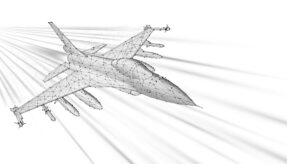
The Defence Infrastructure Organisation (DIO) has released a number of strategies on improving sustainability in its management of defence estates.
Across the construction sector, the question of how the environment is impacted has become a bigger part of how projects are designed. Changes ranging from the design of buildings to on-site waste management and conservation of the local area as well as construction techniques. The DIO guidance details how the MOD is adapting to and combating the effects of climate change along with their policy on the preservation of heritage and historic buildings.
The DIO developed the Climate Risk Assessment Methodology (CIRAM) which identifies the risk to defence organisations from climate change. It identifies the risks and the strategy needed to maintain capabilities. CIRAM supports the UK Climate Change Act, the Greening Government Commitments, the Cabinet Office Critical Infrastructure Resilience Program, and the UK National Security Strategy.
The Construction Strategy published in 2011 by the Government details the government’s sustainability strategy and the six task groups set up to implement it. The strategy aims to reduce waste and improve efficiency while tackling bureaucracy in construction. The strategy details how defence projects should be sustainable, flexible, robust, and fit for purpose. The DIO sets out two key principles for defence construction: defence must be resilient to current and future environmental and economic threats, and defence should reduce the impact it has on the environment, people, and the economy in the UK and overseas. DIO aims for sustainable procurement, aiming for whole-life value for money. The sustainable procurement policy requires that the following questions are asked:
- Is there a more environmentally friendly alternative?
- Are there better alternatives to the materials used in the product?
- Is there a more energy-efficient way of producing the product?
- Are you aware of how the supply chain is working?
- How are workers being treated and are they being exploited?
- What social impacts will occur due to the use of the product?
The demolition of buildings often results in the material being reused for DIO projects. The building of accommodation facilities at Worthy Down has seen 96% of materials from existing structures on the site being recycled for the new facilities while the grounds remained operational. Like many current projects, the building used offsite modular construction, which reduces emissions and provides a more cost-effective and faster method.
Many defence estate sites are home to historic buildings, wildlife habitats, and natural beauty spots. The MOD is one of the country’s biggest landowners and around 170 areas under its control are noted as Sites of Special Scientific Interest (SSSI). MOD biodiversity targets are: to be an exemplar in the management of designated sites, where compatible with military requirements, to ensure natural environment requirements and best practices are fully integrated into estate management, and to contribute, as appropriate, to the UK Biodiversity Action Plan (and Country Biodiversity Strategies).
DIO has carried out many conservation projects in recent years. Most recently, DIO volunteers, along with the Environment Agency, helped remove an invasive plant species from a riverbank in Colchester, reducing flooding risk and preventing the plant from robbing native species of space, light, and water. The Wildfowl and Wetlands Trust (WWT) and Natural England rescued 60 curlew eggs, a species of wading bird with declining numbers, from RAF sites in East Anglia. The eggs were hatched in a reserve and released back into the wild. Rare Fisher’s Estuarine moths in Essex were increased thanks to a conservation effort by DIO and Natural England. MOD estate includes 18,000 hectares of woodland which is often planted to be used for training.
The MOD generates income from timber and maintains woodland population with planting. The DIO has set up the Biosecurity Working Group with the Forestry Commission and Animal and Plant Health Agency. The group aims to combat diseases, such as those affecting ash trees, and to secure plant life and wildlife habitats on MOD estates.
DIO is looking at alternative sources of energy for MOD sites. One alternative explored for RAF Marham is biogas fuel. Locally grown crops are fermented in Anaerobic Digestion creating a gas which is collected and used to power three generators. The plant was built by Future Biogas, who also operate the generator. The process provides the airbase with 95% of its power. It produces around 4.5 MW every hour and saves the MOD almost £300,000 a year.
RAF Marham represents the first military base to be run on green power. The MOD is aiming to create similar energy systems across other bases. The use of biogas reduces MOD carbon emissions by 14,000 tonnes a year. The MOD climate change strategy lists the use of low carbon technology to reduce reliance on fossil fuels as a priority. In the Sustainable MOD Strategy of 2015-2025, the MOD pledges to increase its use of efficient energy sources and reduce its dependence on fossil fuels. Growing energy demands create the need for alternative fuel sources and updates to existing equipment to improve efficiency. This ties into supply chain targets to use equipment with long life capability and high efficiency.
Construction work recently begun at RAF Lakenheath to prepare for the arrival of F-35 jets has been planned to have a low carbon footprint. A concrete plant on-site has been constructed to reduce miles and prevent traffic build-up in the local area, reducing emissions. DIO has used local contractors where possible to improve the local economy and prevent the need for travel. DIO is aiming for at least 40% of the supply chain to be sourced from within a 70-mile radius of the construction.
The MOD has an objective to manage how utilities and waste are managed on-site to reduce its impact on the climate. This includes waste disposal and waste management in construction. The MOD has been expanding its waste and site management contracts to environmentally-focused SMEs. The DIO is focussed on seeking out businesses with sustainable practices. They aim to reduce waste going to landfill to less than 10% by 2020 as well as committing to a 50% reduction in paper use. Recycling and sorting facilities have been built on eight large sites to reduce the amount of waste going to landfill.
The MOD has signed up to the classifying of a ‘hierarchy of waste’ to detail the approach to how it should be managed. The first aim is prevention – using less material as well as reducing the use of hazardous material and ensuring longer lifespans for products to reduce the amount of waste from military sites. The second is ‘preparing for reuse’ which includes cleaning, refurbishing, and repairing parts to allow them to be used again. The third is recycling, which also includes the composting of organic materials and food waste. After that, the MOD advises ‘other recovery’ such as biogas, ie. converting waste into fuel. The last place for waste is incineration and landfill.
The waste management strategy also requires that accurate data on waste being produced must be recorded by industry partners and waste management companies. These procedures are also in effect in overseas operations and bases to the point where they can be enforced. The MOD details the Environmental Protection Act guidelines in its waste management strategy. This includes legislation against the harmful disposal of waste. This prohibits waste being disposed of on any land without a license. The DIO has a duty of care to prevent unauthorised deposit or treatment of waste.
If you would like to join our community and read more articles like this then please click here.
construction DIO energy environment RAF Lakenheath RAF Marham SMEs








